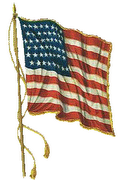The rise and rise of Hamas
By Stephen Zunes
In light of Hamas' seizure of the Gaza Strip, it is worthwhile to understand how this radical Islamist organization came to play such a major role in Palestinian political life and how Israel and the United States contributed to making that possible.
Ironically, it was Israel which encouraged the rise of the Palestinian Islamist movement as a counter to the Palestine Liberation Organization (PLO), the secular coalition composed of Fatah and various leftist and other nationalist movements.
Beginning in the early 1980s, with generous funding from the US-backed family dictatorship in Saudi Arabia, the antecedents of
Hamas began to emerge through the establishment of schools, health care clinics, social service organizations and other entities which stressed an ultra-conservative interpretation of Islam, which up to that point had not been very common among the Palestinian population. The hope was that if people spent more time praying in mosques, they would be less prone to enlist in left-wing nationalist movements challenging the Israeli occupation.
While supporters of the secular PLO were denied their own media or right to hold political gatherings, the Israeli occupation authorities allowed radical Islamic groups to hold rallies, publish uncensored newspapers and even have their own radio station. For example, in the occupied Palestinian city of Gaza in 1981, Israeli soldiers - who had shown no hesitation in brutally suppressing peaceful pro-PLO demonstrations - stood by when a group of Islamic extremists attacked and burned a PLO-affiliated health clinic in Gaza for offering family planning services for women.
Hamas, an acronym for Harakat al-Muqawama al-Islamiyya (Islamic Resistance Movement), was founded in 1987 by Sheik Ahmed Yassin, who had been freed from prison when Israel conquered the Gaza Strip 20 years earlier. Israel's priorities in suppressing Palestinian dissent during this period were revealing: in 1988, Israel forcibly exiled Palestinian activist Mubarak Awad, a Christian pacifist who advocated the use of Gandhian-style resistance to the Israeli occupation and Israeli-Palestinian peace while allowing Sheik Yassin to circulate anti-Jewish hate literature and publicly call for the destruction of Israel by force of arms.
American policy was not much different: up until 1993, US officials in the consular office in Jerusalem met periodically with Hamas leaders while they were barred from meeting with anyone from the PLO. This policy continued despite the fact that the PLO had renounced terrorism and unilaterally recognized Israel as far back as 1988.
...
Pertinent Links:
1) The rise and rise of Hamas
Friday, June 29, 2007
Subscribe to:
Post Comments (Atom)




No comments:
Post a Comment